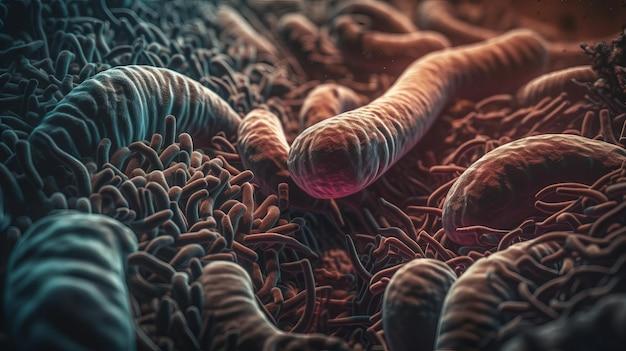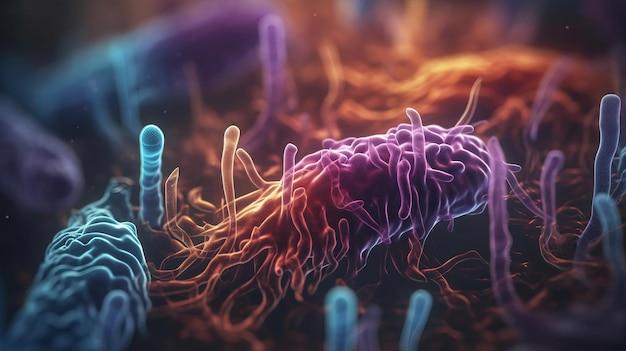Are you curious about the inner workings of a cell? Look no further! In this blog post, we will explore two important components of the cell’s structure called the Smooth Endoplasmic Reticulum (SER) and the Rough Endoplasmic Reticulum (RER). These two organelles play vital roles in ensuring the cell’s proper function and survival.
As you read on, we will unravel the commonalities between SER and RER, understand their functions, and even compare them to familiar elements in a school. So, get ready to dive into the microscopic world of cells and discover the secrets of these intriguing organelles!

What Are the Functions of SER and RER?
If you’ve ever wondered what on earth SER and RER stand for, fear not! It’s not some secret code or the name of a new trendy coffee shop. SER and RER, my friend, are abbreviations for two important players in our cellular world: Smooth Endoplasmic Reticulum (SER) and Rough Endoplasmic Reticulum (RER).
SER: The Smooth Operator
Move over James Bond, because the SER is one smooth operator! This suave organelle may not have a martini in hand, but it sure knows how to shake things up inside the cell. The SER is responsible for a variety of functions that keep our cells running like well-oiled machines.
Lipid Synthesis: The SER is the go-to spot for manufacturing lipids, those fancy molecules that make up our cell membranes. It churns out lipids faster than a bakery can produce cookies, ensuring our cells stay intact and functioning properly.
Detoxification: Need a detox? Look no further than the SER. This clever organelle specializes in detoxifying drugs, alcohol, and other harmful substances that enter our cells. It’s like having a personal bodyguard for your cells, ensuring they stay clean and healthy.
Calcium Storage: Who needs a safety deposit box when you’ve got the SER? This slick organelle stores calcium ions, which play a vital role in cell signaling and muscle contraction. It’s like a hidden treasure trove of calcium, ready to release its riches when needed.
RER: The Rough and Tough
If the SER is the smooth operator, then the RER is definitely the rough and tough sibling. Don’t let its name fool you, because the RER may have a bumpy exterior, but it’s got some serious skills up its sleeve.
Protein Synthesis: The RER is the superhero of protein production. It’s studded with ribosomes, those tiny protein-making machines, giving it a rough appearance under the microscope. This organelle snatches up newly synthesized proteins like a hungry octopus, folding and modifying them before dispatching them to their designated locations.
Quality Control: Just like a discerning restaurant critic, the RER has impeccable taste when it comes to proteins. It ensures that only the highest quality proteins pass its scrutiny, while rejecting any misfolded or faulty ones. Talk about being a tough judge!
Membrane Production: The RER shows off its multitasking skills by producing membrane proteins and phospholipids. It’s like a factory churning out essential components for cell membranes, ensuring they have the right structure and function.
Now that you’re acquainted with the fantastic functions of SER and RER, you can appreciate the intricate dance happening inside your cells. So, the next time you sip a martini or flex your muscles, remember to thank the smooth operator and the rough and tough organelle that make it all possible. Cheers to SER and RER!

FAQ: Functions of SER and RER
The endoplasmic reticulum (ER) is a vital component of a cell, responsible for various functions essential for its survival. It consists of two types: the smooth endoplasmic reticulum (SER) and the rough endoplasmic reticulum (RER). In this FAQ-style blog post, we’ll delve into the functions and similarities of SER and RER, draw amusing comparisons to a school setting, explain ribosomes in kid-friendly terms, and even speculate about what would happen if the Golgi body decided to take a vacation!
What are the functions of SER and RER
The SER and RER play crucial roles within a cell, albeit slightly different ones. Let’s explore their functions individually:
Smooth Endoplasmic Reticulum (SER)
The SER might sound like the “Smooth Operator” of cells, and for good reason! Here’s what it does:
-
Lipid Synthesis: The SER is the primary site for synthesizing lipids in the cell. Just like a busy chef in a school cafeteria cooking up delicious meals, the SER whips up lipids needed for essential cellular processes.
-
Detoxification: Imagine the SER as the janitor of the cell, diligently cleaning up toxins. It removes harmful substances and converts them into less harmful forms, ensuring the cell stays squeaky clean.
-
Calcium Storage: The SER acts like a cell’s personal storage unit, specifically for calcium ions. It carefully balances the levels of calcium in the cell, similar to an organized librarian maintaining a well-arranged collection.
Rough Endoplasmic Reticulum (RER)
The RER, often referred to as the “Rough-and-Tumble ER,” has a slightly rougher role within the cell. Its primary functions include:
-
Protein Synthesis: The RER is responsible for producing proteins, the building blocks for various cellular structures and functions. It’s like a dedicated factory line, churning out proteins with precision and accuracy.
-
Protein Folding and Modification: Just producing proteins isn’t enough; they need to be properly folded and modified to function correctly. The RER takes on this crucial task, acting like a fashion designer, meticulously tailoring proteins to ensure they’re in vogue.
-
Intracellular Transport: Once proteins are synthesized and processed, the RER packages them into tiny transport vesicles, sending them to their final destinations within the cell. It’s like a bustling postal service, ensuring proteins reach their proper “addresses” on time.
What do SER and RER have in common
While the SER and RER may have distinct functions, they also share some common traits that make them true ER siblings:
-
Membrane Structure: Both the SER and RER consist of a network of membranes spread throughout the cell, resembling an intricate maze. Think of it as hallways and corridors connecting different parts of a school.
-
Continuous Connection: The two ER types are not isolated entities; they’re interconnected, allowing materials to move freely between them. Picture them as two neighboring classrooms with an open door, facilitating seamless interaction.
-
Ribosome Presence: Although ribosomes mainly reside on the RER, both SER and RER have ribosomes attached to their surfaces at times. It’s like students momentarily occupying different classrooms during a class change!
How does a cell compare to a school
Ah, the classic cell-school analogy, a fun way to understand cellular components! Think of a cell as a bustling school:
-
Nucleolus: If a cell were a school, the nucleolus would be equivalent to a school’s administrative office. It manages the production of ribosomes, similar to how the office handles administrative tasks for the smooth running of the school.
-
Ribosome: In our school-cell comparison, a ribosome represents a hardworking group of students. These students dutifully assemble proteins just like students creating projects.
-
Golgi Body (Apparatus): The Golgi body acts as a school’s principal or headmaster, overseeing the final processing and packaging of proteins before they proceed to their specific destinations within the cell or outside the school.
How do you explain ribosomes to kids
Explaining ribosomes to kids can be a fun scientific adventure! Imagine ribosomes as tiny factories within the cell, where workers called “ribosomes” assemble proteins like little builders constructing Lego masterpieces. Just as the workers follow blueprints to build different Lego models, ribosomes read instructions from our body’s genes to create various proteins needed for our cells to function properly. Isn’t that fascinating?
What will happen if the Golgi body is removed from the cell
Oh, the chaos that would ensue if our Golgi body decided to disappear! Without the Golgi body, the cell’s shipping department would be on an extended vacation, leading to protein processing and packaging delays. Proteins wouldn’t reach their intended targets, causing mayhem within the cell. It would be like a school without any teachers to guide and organize the students – utter pandemonium!
What are the four functions of the endoplasmic reticulum
Let’s sum it all up! The endoplasmic reticulum, comprising the smooth and rough types, performs four vital functions in a cell:
- Lipid synthesis: The SER creates lipids like a busy chef preparing essential cellular components.
- Protein synthesis: The RER acts as a protein factory, ensuring the production of the necessary building blocks for various cellular functions.
- Protein folding and modification: The RER ensures proteins are properly folded and modified, akin to the role of a diligent fashion designer.
- Intracellular transport: Both SER and RER contribute to transporting proteins to their designated cellular destinations, like a bustling postal service ensuring timely deliveries.
And there you have it, a comprehensive FAQ-style guide to the functions of SER and RER! Now you have a deeper understanding of these essential components of a cell and can imagine cellular processes in terms of a lively school environment. Keep exploring and discovering the wonders of the microscopic world within you!
